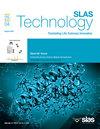Contrast-enhanced ultrasonography combined with microbubbles for uterine disorders: Current trends and future perspectives
IF 3.7
4区 医学
Q3 BIOCHEMICAL RESEARCH METHODS
引用次数: 0
Abstract
Uterine disorders, including fibroids, polyps, and carcinomas, represent significant health concerns for women. Conventional diagnostic methods, including ultrasound and magnetic resonance imaging, often lack the sensitivity required to accurately delineate and evaluate these lesions. Consequently, there is a growing need for advanced imaging techniques to enhance both diagnostic precision and therapeutic decision-making. Standard imaging modalities typically provide low resolution, limiting their effectiveness in evaluating uterine pathology and determining optimal treatment strategies. In this context, microbubbles combined with contrast-enhanced ultrasonography offer a promising solution. This technique enhances the visualization of vascular patterns and tissue perfusion, facilitating a more accurate assessment of uterine lesions. Contrast-enhanced ultrasonography is less invasive, is more cost-effective, and offers real-time evaluation of vascular characteristics, making it a valuable tool for diagnosing uterine abnormalities. This review explores the clinical utility of contrast-enhanced ultrasonography with microbubbles in uterine diseases, focusing on its diagnostic accuracy, comparison with traditional imaging techniques, and its potential to improve the management of uterine pathology.
超声造影结合微泡诊断子宫疾病:当前趋势和未来展望
子宫疾病,包括肌瘤、息肉和癌,对女性来说是一个重要的健康问题。传统的诊断方法,包括超声和磁共振成像,往往缺乏准确描绘和评估这些病变所需的灵敏度。因此,越来越需要先进的成像技术来提高诊断精度和治疗决策。标准成像方式通常提供低分辨率,限制了其在评估子宫病理和确定最佳治疗策略方面的有效性。在这种情况下,微气泡结合超声造影提供了一个很有前途的解决方案。该技术增强了血管模式和组织灌注的可视化,有助于更准确地评估子宫病变。超声造影侵入性小,成本效益高,可实时评估血管特征,是诊断子宫异常的宝贵工具。本文就超声微泡造影在子宫疾病中的临床应用进行综述,重点讨论其诊断准确性、与传统成像技术的比较以及在改善子宫病理管理方面的潜力。
本文章由计算机程序翻译,如有差异,请以英文原文为准。
求助全文
约1分钟内获得全文
求助全文
来源期刊

SLAS Technology
Computer Science-Computer Science Applications
CiteScore
6.30
自引率
7.40%
发文量
47
审稿时长
106 days
期刊介绍:
SLAS Technology emphasizes scientific and technical advances that enable and improve life sciences research and development; drug-delivery; diagnostics; biomedical and molecular imaging; and personalized and precision medicine. This includes high-throughput and other laboratory automation technologies; micro/nanotechnologies; analytical, separation and quantitative techniques; synthetic chemistry and biology; informatics (data analysis, statistics, bio, genomic and chemoinformatics); and more.
 求助内容:
求助内容: 应助结果提醒方式:
应助结果提醒方式:


